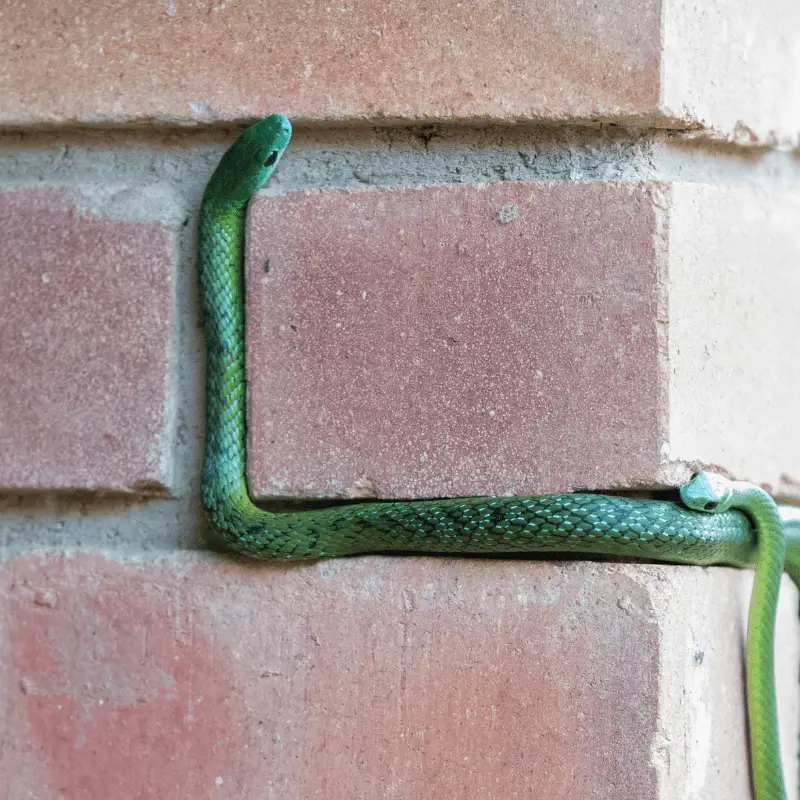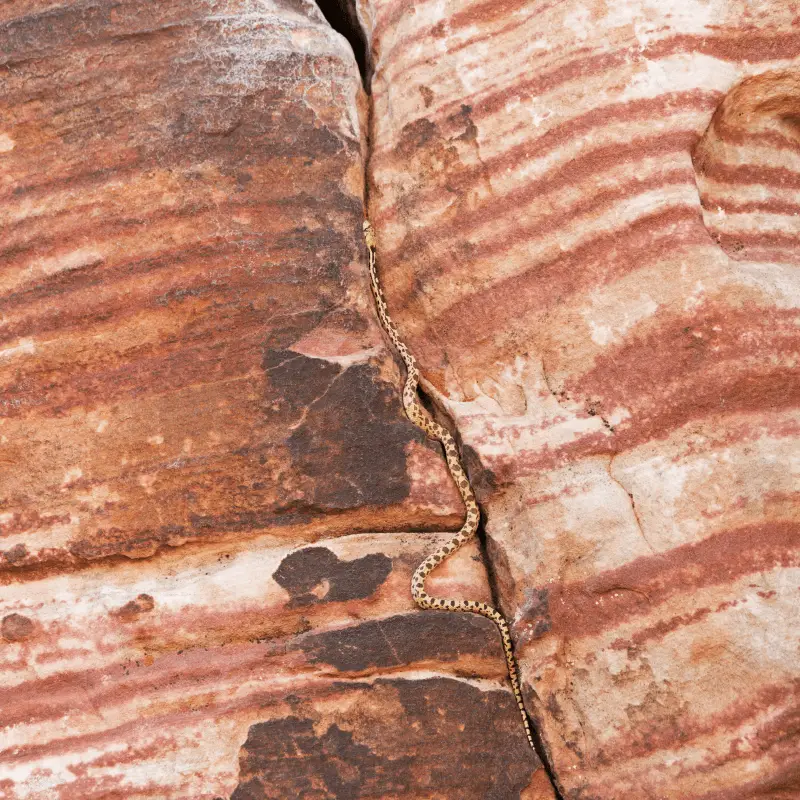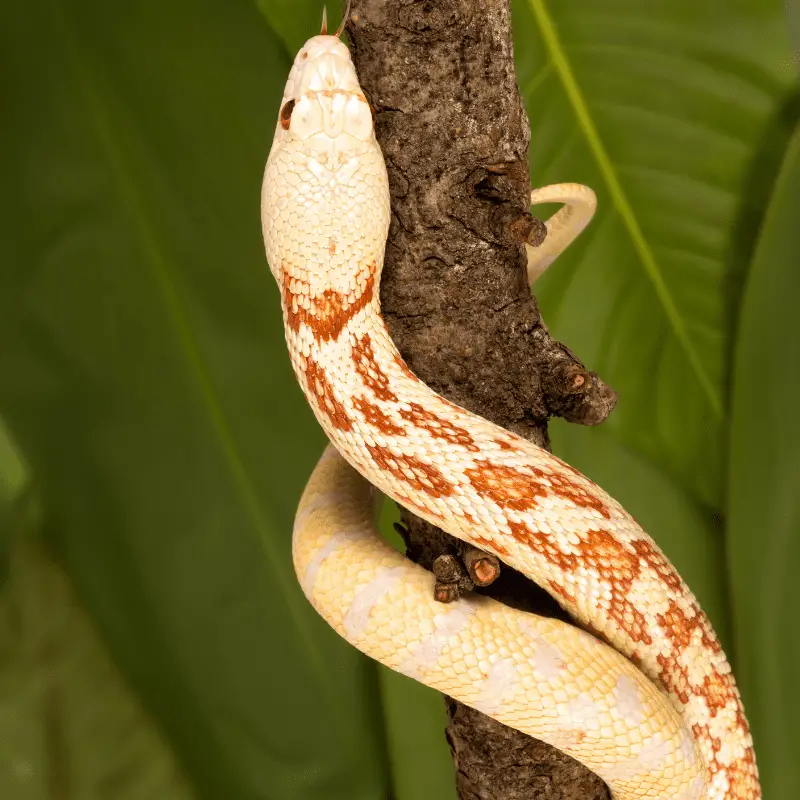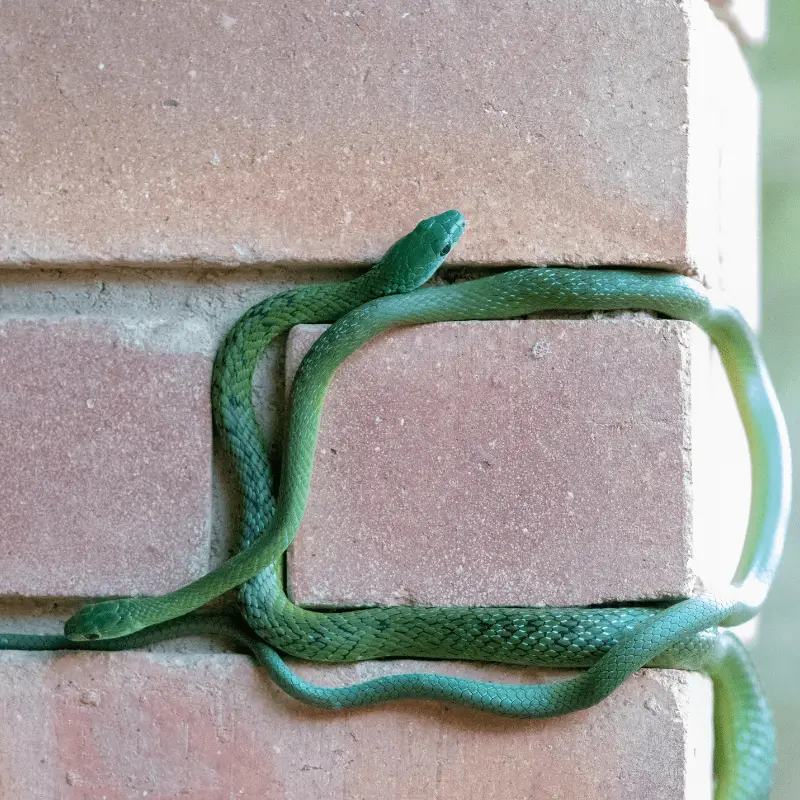Even though it is hard to imagine from their slither that snakes can climb rocks and trees in the wild without any assistance of hands, feet, claws or pads. They can also burrow, crawl, swim, and sometimes even glide in the air. All these abilities have made the snakes the emperor of surviving in the wild. Now the question is, do these surviving skills come in handy to climb over the human-made structures, like walls?
Yes, Snakes can climb walls and all other human-made structures. These reptiles can climb stone walls as well as the brick ones. Using their strong core muscles, snakes move their body between the bricks and pull themselves up little by little. While all snakes can climb walls, the lightweight and fast-moving ones get an advantage. Rat snakes, for example, can be considered as the champion climbers. However, snakes find it hard to climb the plastered walls or other smooth ones.
In the following section of this article, we will be discussing the types of walls the snakes can climb and how they do it. To know more, keep on reading.

Which structures are easier and harder?
As climbing rocks and trees is natural for the snakes, most of them can easily climb walls. Studies have shown that some types of snakes, like timber rattlesnakes, can climb as high up as 47-foot walls.
Still, compared to the rock faces and trees, walls are quite challenging to climb. Most walls are vertical and do not have any protrusions or branches that a snake can cling to. That is why the efficiency of wall climbing of the snakes depends entirely on the building materials.
As most of the stone walls contain ridges and grooves, it is easier for the snakes to climb it. Snakes are experts in climbing the brick walls. They use the small gaps between the bricks to keep themselves latched into place.

The walls that do not have any crevices or ridges pose a threat to the snakes. Most of them cannot climb on the wallpapered or plastered walls. Even the metal and glass made walls can be challenging for them.
If a smooth wall has something to cling to, then and only then the snakes can climb it. For example, some snakes can climb the vinyl sidings by clinging to the side trims. In cases of the stucco walls, the smoothness of the wall works as the main factor. If the walls have ridges and grooves, the thinner snakes can climb onto it.
Easy to climb for a snake
- Rocks
- Trees
- Stairs
- Walls with Ridges and Grooves
- Walls with Gaps between them
- Stucco Walls (Thinner Snakes)
- Vinyl sidings (Thinner Snakes)
Impossible or difficult to climb for a snake
- Glass
- Plaster Board
- Wallpapered Walls
- Stucco Walls (Big snakes)
- Vinyl Sidings (Big snakes)
- Ceramic Tiles on Building Walls

Can snakes climb really high walls?
If the wall is shorter than the snake’s length, it can climb over it; for example, a 4-foot long snake can climb over any wall of 2-foot in height. It will use its tail to propel the body over the wall and climb it.
The higher the walls are, the less likely it is for the snakes to climb to the top. Even though some snakes can climb higher walls, it is mostly by chance. The longer a snake has to climb a wall, the more chances of it falling down. If the snake miscalculates one single move and puts its body in a wrong place, it can drop within seconds.
However, snakes are quite persistent. In the jungle, they can climb with ease the rock faces and high trees. That means if they put their mind to it, the snake will keep on trying till it reaches the top of the wall. Even a 20 ft long wall cannot deter a persistent snake. It will just take them longer to climb all the way to the top.
How do the snakes climb walls?
As we have mentioned before, snakes do not have sticky toes or any other assisting body parts. It cannot create suction to latch onto a wall. Instead, the snakes use their powerful core muscles to hang onto the walls’ gaps to make sure they do not fall. If you watch a snake climbing a wall, it will almost seem like the snake is defying gravity.
Studies have found out that the snake increases the friction to the surface by using concertina like motion. While climbing the walls, the snakes can unfold and fold their bodies like the folds of an accordion. Faster snakes, like the black racers, take their time while climbing walls.
That’s why the snakes can’t climb smooth surfaces, like a glass wall. As there is nothing for them to grip, and they would keep falling off.
It is why the snakes cannot climb over vertical smooth wooden walls or tight mesh walls as long as there is no gap between any two panels of the wood for the snakes to cling and work with.
Why do snakes climb walls?
Snakes would choose to climb walls to evade the threat of the predators. Hunger, temperature and mating desires are just some of the primary motivations for them to climb walls. All in all, there are four top reasons why snakes would try to climb a wall.
- Cold: as the snakes are cold-blooded, they depend on external heat sources to keep themselves warm. So, a snake can try to climb over a wall if it detects heat sources on its other side.
- Prey: the snake will climb a wall if it gets the scent of its prey. That is why, in some countries, people often find snakes in their attics.
- Mating: snakes can also climb a wall while following the scent of a potential mate. The snakes emit pheromones which helps them to attract the snakes of the opposite sex.
- Escape: many animals in the wild love to feed on the snakes. While running away from them, the snakes will climb a wall.
Can snakes get inside walls?
Yes, if there is a gap in the wall, the snakes can squeeze through. Do not judge by the size of the gap. The snakes can squeeze inside a much smaller place thanks to their flexible bodies. But, if a snake goes inside a wall, it usually means it has been attracted by something. The chances are that the snake got rats or mice’s scent and is trying to find it for its dinner. In the colder months, the snakes can try to get inside a wall to get some warmth.
Conclusion
Above all, the snakes are highly motivated by food. So, if you want to keep your garden snake-free, you should try to keep it pest-free first. Cut the grass of the garden and remove any potential hiding places, like rock piles and logs.

